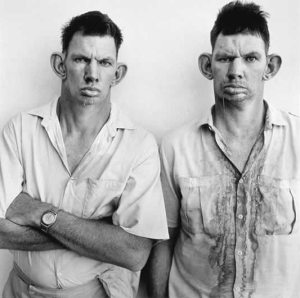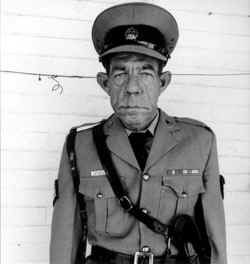
But are these images true? Look closer and you see that one of the twins has drool hanging from his lips, the other a hair dangling from his chin. The Sargeant's head is as big as the twin's are small, his hat perched on the head like a pigeon on a statue. Some sort of frayed telephone wire seems to go through his ears. These are the monsters? They look like any of the good old boys I grew up around, mugging for the camera.
Even more disturbing is to look at the dates of some of the work in "Shadow Chamber" These shots were taken at the same time as the "documentary" work.
No, Ballen's documentary photography makes us take a critical look at ourselves, rather than at some remote or uncaring government. There is no "they" who should do something for these poor unfortunates or against these oppressors. There is only our own prejudice and preconception to be examined in the light of the examination of these images.
By what set of rules do we decode the symbols here? By what assumptions do we judge Ballen's subjects (actors?) as they tell us their stories? In one man's photographic journey is echoed the essential question of photography, is it true or is it art?
